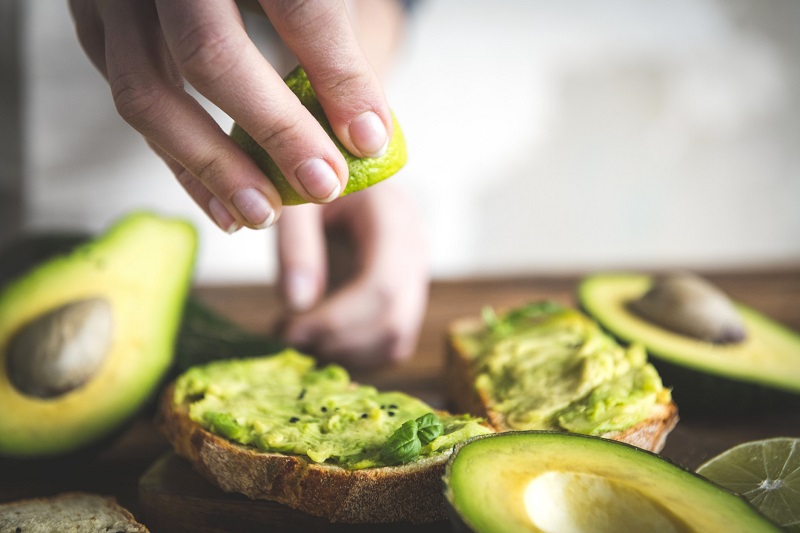Is Insulin Resistance to Blame for Slow Weight Loss? Here’s What You Can Do
Article posted in: Experts’ Corner
Have you ever struggled to lose weight, even when you’re doing everything right? If so, insulin resistance could be to blame.
Insulin resistance is a metabolic condition where your body becomes less sensitive to the effects of insulin, a hormone produced by your pancreas that regulates your blood sugar levels. When you’re insulin resistant, your body has a harder time processing the food you eat for energy, making it difficult to lose weight.
But don’t despair – If you’re wondering how to manage insulin resistance, there are steps you can take to achieve your weight loss goals. Let’s dive into the details:
What Is Insulin Resistance?
In simple terms, insulin resistance occurs when your cells become less responsive to insulin signals. This can happen for a variety of reasons, including genetics, hormonal imbalances, and diet and lifestyle factors.
Under normal conditions, your blood sugar levels (also called blood glucose levels) rise after you eat. Insulin is then released from your pancreas to move glucose out of your bloodstream and into your cells for energy or later storage.
Think of insulin as a delivery service that brings meals to your cells. It acts like a messenger that knocks on the door of your cells and allows glucose to enter, providing the necessary fuel for all cellular activities.
Usually, your blood sugar levels and insulin levels move in lockstep to keep your body energized and your blood sugar levels stable. However, if you’re insulin resistant, your cells don’t hear insulin’s knock at the door. As a result, glucose builds up in your bloodstream, and your body produces more and more insulin to knock louder until the cell responds.
Over time, elevated insulin levels and high blood sugars can lead to metabolic changes that make it hard to maintain a healthy weight. It can lead to Type 2 diabetes and other health issues.
What Causes Insulin Resistance?
There are a variety of factors that can increase your risk of being insulin resistant, including:
- Carrying extra weight in the midsection: excess body fat in your abdomen produces a variety of chemicals that can interfere with insulin’s ability to move glucose into cells. However, you do not have to be overweight to have insulin resistance.
- Diets high in saturated fats and processed refined carbohydrates: these foods can cause inflammation and impair insulin sensitivity.
- Hormonal and genetic conditions: some conditions, such as polycystic ovary syndrome (PCOS) and Cushing’s syndrome, can lead to insulin resistance.
How Do You Know If You Are Insulin Resistant?
Some common signs of insulin resistance include feeling tired or fatigued after eating, frequent hunger or cravings, difficulty losing weight, and high triglycerides and cholesterol levels. Your doctor can also perform tests, such as fasting glucose or HbA1C, to determine if you have insulin resistance.
Insulin Resistance and Weight Loss
Insulin resistance can cause a host of metabolic changes that may affect weight loss and even promote weight gain. These include altering the breakdown of fat cells and impairing hunger signals.
But don’t give up hope! Losing a modest amount of weight can reduce insulin resistance, making it easier to maintain a healthy weight in the long term.
Studies have shown that a 5 to 7% reduction in body weight can significantly improve insulin resistance and reduce your risk for Type 2 diabetes. That’s about 10 to 14 pounds for a person who weighs 200 pounds.
Even if you want to lose more than that, this can serve as a great first goal. Achieving this milestone will not only result in visible changes to your appearance but will mean you’ve improved your overall health and ability to achieve weight loss over time.
How to Lose Weight With Insulin Resistance
If you’re concerned you may be insulin resistant, speak with your doctor about the best overall treatment plan. For most people, diet and lifestyle changes that focus on the following will be particularly important when dealing with insulin resistance:
Aim For a Moderate Calorie Reduction
![]()
Maintaining a calorie deficit of around 500 to 1000 calories per day will be enough to support weight loss of about one to two pounds weekly. This amount will help produce results while managing hunger and cravings.
Establishing personalized calorie goals based on your starting weight and health status is important. You can work with your doctor or a Registered Dietitian to determine your best calorie goal.
Programs like Nutrisystem also provide customized plans based on your health goals and progress. The Nutrisystem app can provide you with a personalized calorie goal based on your unique metabolism.
Reduce Total Fat Intake and Focus on Unsaturated Fats.

High levels of circulating fatty acids in your blood are associated with insulin resistance. Studies have shown that replacing saturated fat with healthier fats in your diet can improve insulin resistance. Try swapping olive oil for butter, avocado for mayo, or plant-based proteins for red meat.
Choose Low Glycemic Index Carbohydrates

Choosing carbohydrate foods that rate low on the glycemic index may provide additional benefits. A small study in obese adults with prediabetes found that those who combined exercise with a low glycemic index diet vs. a high glycemic index diet showed greater improvements in insulin response after eating.
Low glycemic index carbohydrates are typically whole grains that are high in fiber and low in added sugars, which means they won’t cause a rapid spike in blood sugar levels after eating. However, processing and cooking methods can affect the glycemic index of foods.
To ensure your meals are lower on the glycemic index, it’s best to center them around carbohydrates like fruits, vegetables, legumes and whole grains. You can also opt for a Nutrisystem meal plan, which are designed based on the science of the glycemic index, allowing you to reap the benefits without having to track specific numbers.
Increase Physical Activity

You’ve probably heard that physical activity is important for weight loss, but this is even more true if you’re struggling with insulin resistance. Numerous studies have demonstrated that insulin sensitivity increases after exercise. This means you can quickly impact your ability to overcome insulin resistance by prioritizing physical activity in your weight loss plan.
Researchers haven’t determined whether certain types of exercise are better than others. So, whether you prefer jogging, cycling, swimming or lifting weights, incorporating any type of regular exercise into your routine can help improve your body’s ability to use insulin efficiently. Set small weekly goals and continue to build up to the recommended 150 minutes per week.
Key Takeaway
Seeing slow progress on the scale can be disheartening, but don’t get discouraged. There are many reasons this may be happening and just as many solutions.
If you think insulin resistance may be a factor, discuss your concerns with your doctor to determine the best plan to keep you on track with your health goals.
Programs like Nutrisystem can provide support and resources perfect for helping you make lifestyle changes needed to overcome common weight loss challenges. Stick with it, and over time, you will see results.
References
- Centers for Disease Control and Prevention. Insulin Resistance and Diabetes. US Department of Health and Human Services. Published June 20, 2022. Accessed April 30, 2023. https://www.cdc.gov/diabetes/basics/insulin-resistance.html
- Centers for Disease Control and Prevention. Prediabetes. US Department of Health and Human Services. Published December 30, 2022. Accessed April 30, 2023. https://www.cdc.gov/diabetes/basics/prediabetes.html
- Centers for Disease Control and Prevention. Losing Weight. US Department of Health and Human Services. Published September 19, 2022. Accessed April 30, 2023. https://www.cdc.gov/healthyweight/losing_weight/index.html
- Risérus U, Willett WC, Hu FB. Dietary fats and prevention of type 2 diabetes. Prog Lipid Res. 2009;48(1):44-51.
- Solomon TP, Haus JM, Kelly KR, et al. A low-glycemic index diet combined with exercise reduces insulin resistance, postprandial hyperinsulinemia, and glucose-dependent insulinotropic polypeptide responses in obese, prediabetic humans. Am J Clin Nutr. 2010;92(6):1359-1368.
- Sampath Kumar A, Maiya AG, Shastry BA, et al. Exercise and insulin resistance in type 2 diabetes mellitus: A systematic review and meta-analysis. Ann Phys Rehabil Med. 2019;62(2):98-103.







